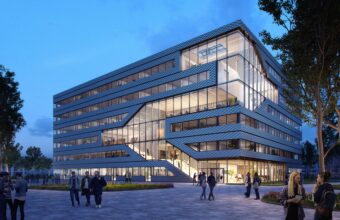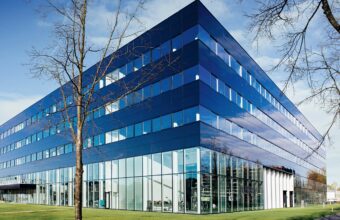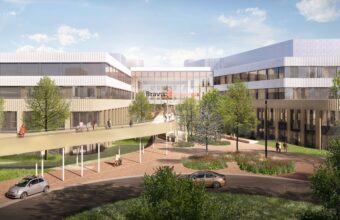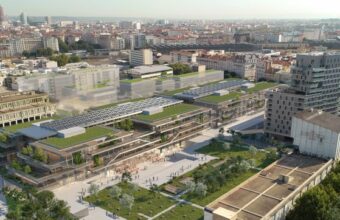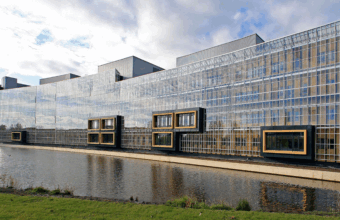Smart Building Design & Building Automation
Diverse users, evolving tasks and growing sustainability demands are making buildings increasingly complex. We address these challenges through the design and integration of Smart Building and Building Automation technologies, creating future-proof, efficient spaces for today and tomorrow.
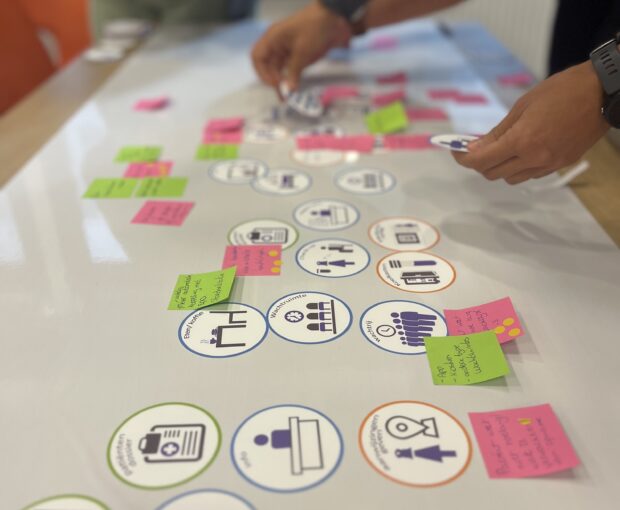
The aim of Smart Building solutions is to prioritise people, sustainability and operational efficiency. A smart building collects and integrates data, providing valuable insights to stakeholders and enabling informed decision-making. Smart is all about synergy: building systems and technologies are interconnected using centralised data as a single source of truth. Deerns’ expertise unlocks the full potential of building technology, enhancing efficiency, sustainability and user experience.
People
Smart building design starts with people. Our collaborative workshops bring together stakeholders to define challenges and needs, shaping a clear smart ambition. With our expertise, we match the right technologies to bring that vision to life.
Operational efficiency
Smart technology provides insights on building operations, ensuring timely maintenance, optimal space usage, enhanced wellbeing and sustainability. Integrated systems maximise performance, empowering building operators with data-driven decision-making.

Building automation forms the technical backbone for controlling building systems, from adjusting meeting room temperatures based on occupancy or weather, to managing energy use. An Energy Management System (EMS) provides detailed insights into energy flows and monitors consumption, enabling targeted saving measures.
Central to automation is the Building Automation and Control System (BACS), which integrates systems like heating, ventilation, air conditioning and lighting for optimal performance, efficiency and comfort. By responding to real-time data, BACS lowers operational costs, improves indoor environments, and drives more sustainable building operations.
+95
SmartScore
Global
Cross-sector
Our expertise and services
The Deerns Smart Building Automation team focuses on creating added value for both owners and users through the following services:
- Developing a building automation and/or smart building strategy
- Engaging stakeholders through interactive workshop sessions
- Assessing status and mapping ambitions using Smart Building Quickscan
- Preparing a full Program of Requirements (PoR) for the design and execution of the necessary building automation and smart building systems
- Acting as process supervisor during the design and implementation process (commissioning)
- Market analysis and comparison for optimal supplier and product selection
- Cost management of investment and operating costs (total cost of ownership)
- Advising on data privacy, strategy, management and cybersecurity
- Meeting regulations such as BACS and EPBD, and handling certifications like BREEAM, WELL and SmartScore.
" Smart building technology offers limitless possibilities. At Deerns, we start by building a strong business case to make them clear.
Frequently asked questions
How does technology reduce energy consumption?
Smart technologies and building automation reduce energy consumption by adjusting lighting, HVAC and other systems based on real-time data. Historical data supports improved decision-making for energy usage, space utilisation and maintenance, further optimising energy efficiency. Energy management systems help with saving energy but also with potential net congestion issues, by moving or lowering energy peaks.
How does Deerns help clients comply with BACS, EPBD and other standards?
Deerns is always up to date with the latest regulations related to our own designs. We also advise clients on anticipated upcoming legislation, conduct regulation scans to assess whether your current building(s) or design meets the latest standards, and identify points of improvement.
Does a smart building provide a good Return on Investment?
A well-controlled building pays for itself quickly. It does this through, among others:
Higher revenues on existing premises derived from insights into space usage, installation issue warnings triggered by electricity consumption peaks, preventing defects by predictive maintenance through (vibration) measurements.
Although well-conceived building automation and smart building designs initially involve higher CAPEX investments, costs are often recovered within 3 to 5 years through operational savings.



